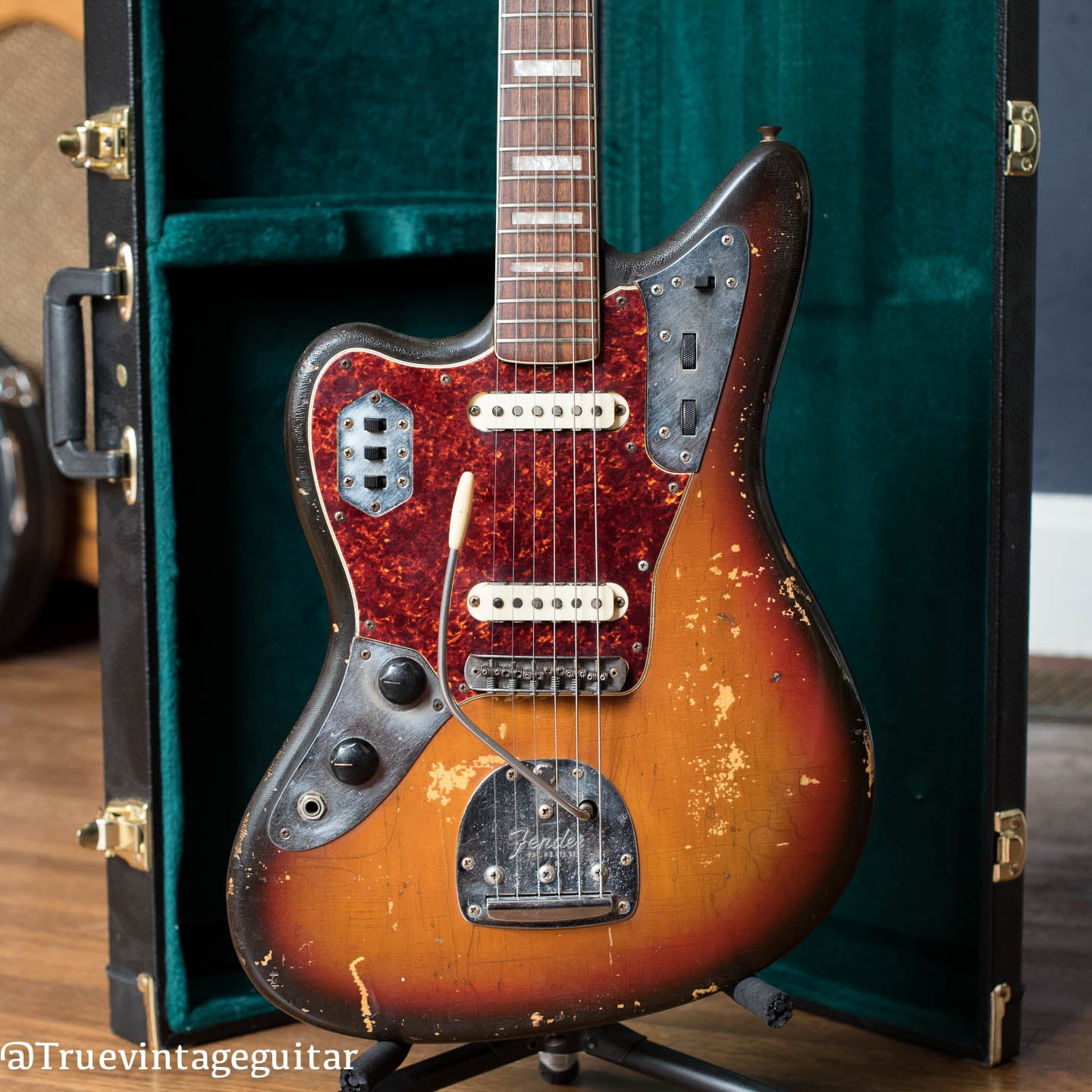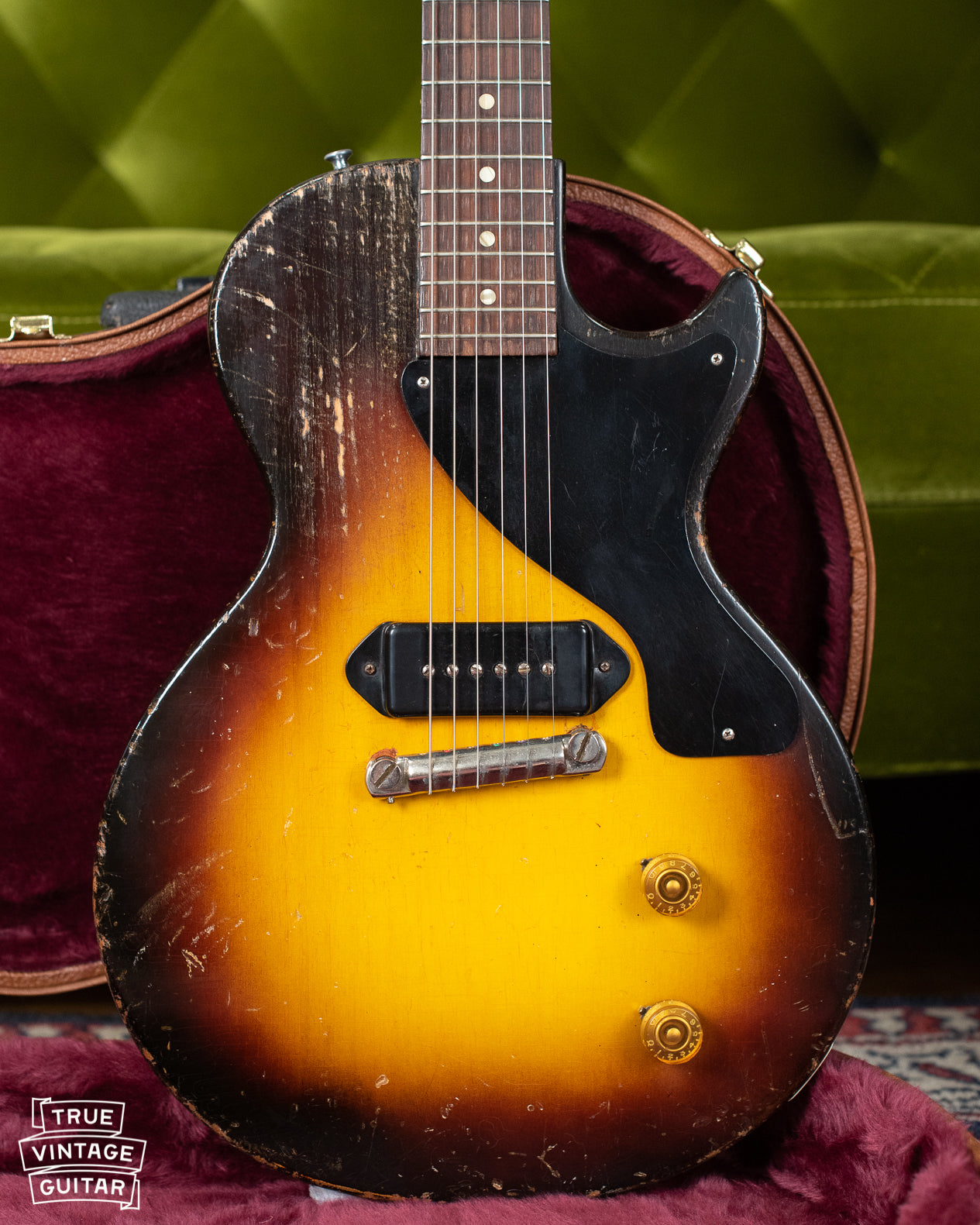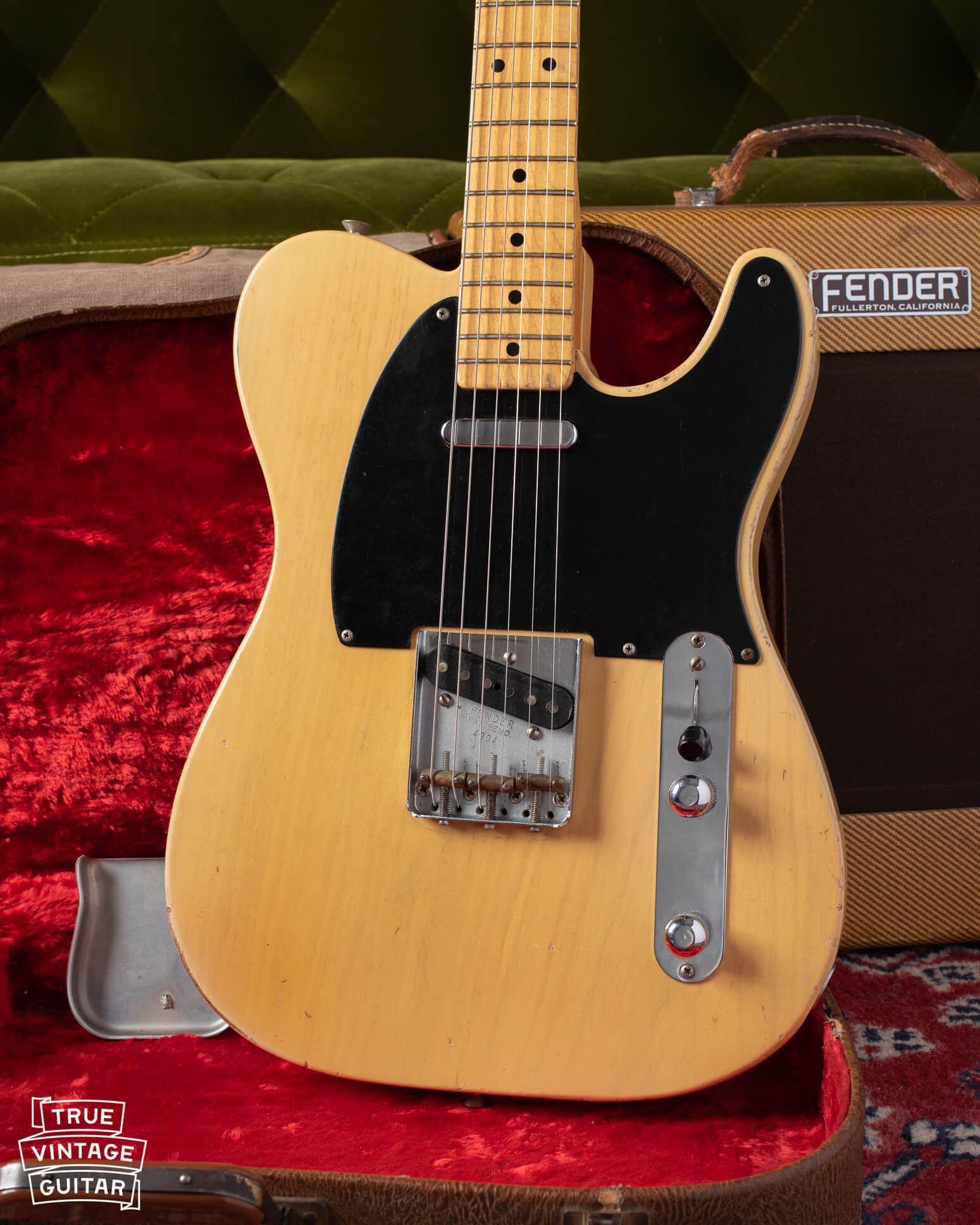The Fender Jaguar model electric guitars is one of my favorites every made. It was intended to supersede the previous three electric guitar models from Fender, but never quite achieved that status. Not all Jaguars are created the same since Fender gradually changed production of all the guitars and amplifiers throughout the 1960s.
I'm always a vintage Fender guitar buyer but I'm especially looking for Fender Jaguar guitars from the 1960s and 1970s. You can contact me here to sell a Fender guitar.
Or if you're looking for help with Fender guitar dating, check out How to date a vintage Fender Jaguar guitar.
You can check out the previous posts in this series here:
1968
Most Fender guitars from 1968 are still largely similar to those made in 1968, but by the end of the year, a few key aspects begin to change. The wiring inside the guitars and amplifiers had been cloth covered since the beginning of the company in 1946. The wiring transitioned to thinner looking plastic coated wire by late 1968. The style of finish began to change gradually from all nitrocellulose to a combination of nitro and polyurethane.
Production of Fender guitars had decreased in '67 and '68 so they're a bit less common to find. Not only that, but the Jaguar model decreased in popularity when compared to the tried and true Stratocaster and Telecaster guitars. Unfortunately, I've yet to personally own a 1968 Fender Jaguar, so I'll use another guitar from this time period.
This 1968 Fender Telecaster features largely the same features of one made in 1967. It's an all nitro finish with no polyurethane. The wiring is still the cloth covered variety, but also the post-'67 style wiring layout with switch wired as neck, both, and bridge pickup positions.


1969 and 1970
Since the guitars from mid to late 1969 and 1970 are made about the same way, I'll lump them into the same category (and because, well, I haven't owned one from 1969. You can contact me here to sell a 1969 Fender Jaguar!). The finish has now transitioned to an undercoat of polyurethane and top coats of nitrocellulose. The wiring inside is all plastic covered. The wood used for the guitars is now on average a bit heavier than that used in the early 1960s.
This 1970 Fender Jaguar has a truly rare feature: it's made for a left handed player! A player could order a left handed guitar from Fender at a slight upcharge, but few did. It's rare to find a lefty vintage Fender Jaguar so I was very glad to find this one. Fender didn't make a left handed logo at the time, so the model name was chopped off the waterslide sticker. It only says "Fender".






